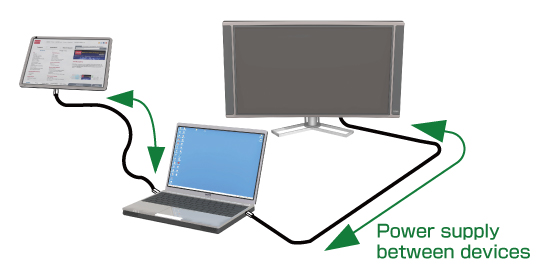usbpd_what2
Advantages of USB PD
<USB PD Advantages>
USB PD Advantages
USB PD provides the following operations.
Power Supply from USB Port
USB PD utilizes power rules to supply up to 100W via USB Type-C at 4 different voltage levels (5V/9V/15V/20V) based on application requirements.
 | |||
| 15W | 27W | 45W | 60W~100W |
| 5V/1.5A 5V/3A | 9V/3A | 15V/3A | 20V/3A~5A |
【USB PD Power Rules】
Common Adapter
The capability of supplying power based on set requirements enables a common adapter that eliminates the need to provide different adapters and chargers for different devices, significantly improving convenience while contributing to less e-waste.

Power Supply Between Devices
USB PD enables power supply between devices.
Both connected devices can act as the Source (power supply) or Sink (power receiver) based on power requirements.

Simultaneous Data and Power Transmission
Power can be supplied at the same time as data communication using the USB Type-C connector.
In addition, Alternate Mode is supported for transmitting video signals.
In this way, data transmission, power supply, and video communications are enabled using a single USB terminal, providing a more convenient, easy-to-use, and efficient method.
AlternateMode :
A control mode capable of handling video signals. This eliminates the need for a dedicated video terminal conventionally required in laptops and other devices.
electronics_tips_menu




